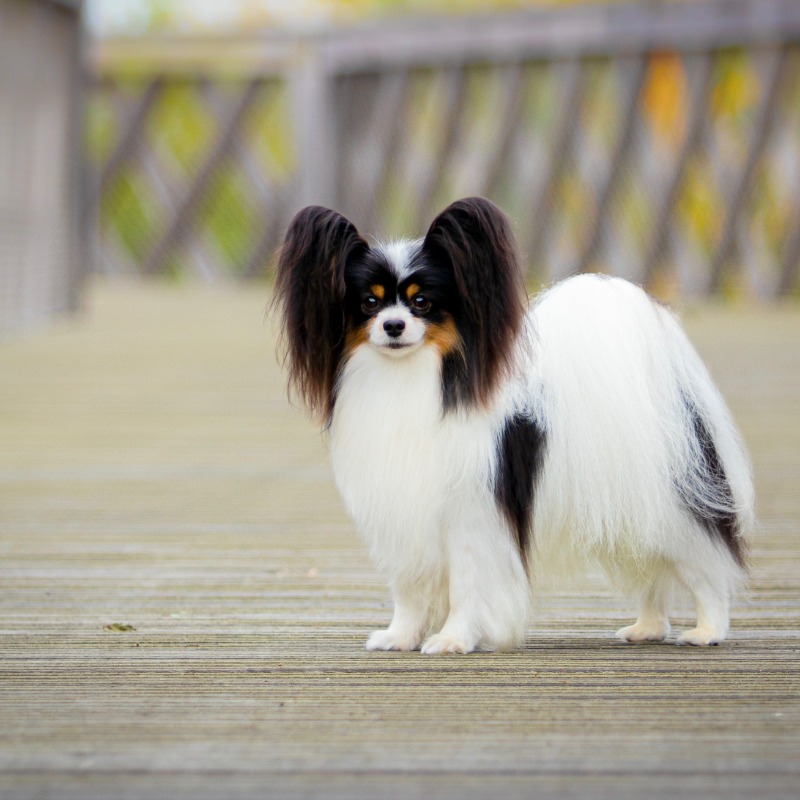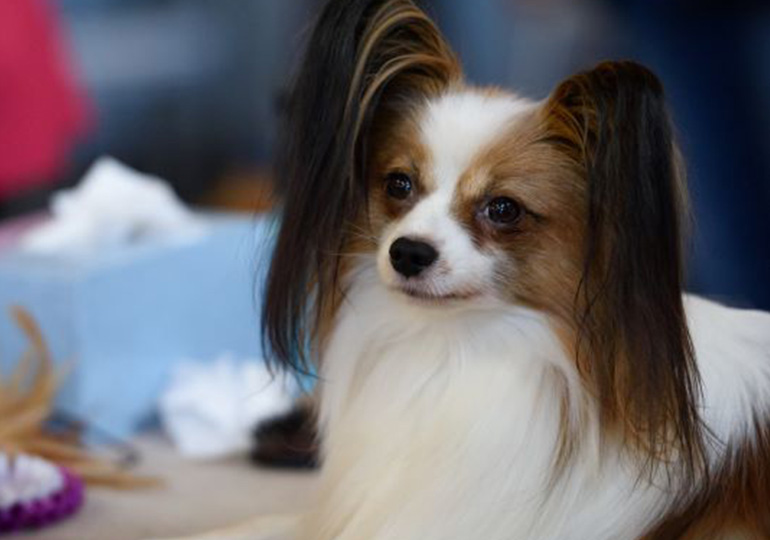Breeds
Papillon

GROUP 1 - TOYS
Brief History
Bred for no other reason than to be charming and attractive companions for noblewomen, Papillons were great favourites of royalty and aristocrats over much of Europe. Their existence was captured and authenticated as they appear in portraits tenderly held as affectionate accessories by queens and princesses, painted by the masters such as Rembrandt and Reubens. The breed was developed during the Renaissance where toy breeds were crossed with spaniels in keeping with the era’s obsession for producing miniature replicas of their favourite breeds. Their sporting spaniel heritage still manifests itself today, as they are among the more athletic of toy breeds. The French connection to the breed is strong, firstly his namesake is French, but he also had admirers such as Marie Antionette, who kept a Papillon right up to the time she met her end by guillotine. However, it was in Italy and Spain where the Papillon was propagated and popularised.
Average Life Span
When considering a dog, please realise that you are taking it on for its lifetime.
The average life span is 14 to 16 years.
Temperament
Butterfly by name, the Papillon is also butterfly by nature. He is ever busy, inquisitive, good natured, sensitive and kind. He cavorts, dances and is imbued with boundless energy and infinite enthusiasm.
General Breed Description
A petite, elegant and dainty dog, you can still spot a Papillon from 20 paces thanks to the large, wing-shaped ears that give the breed his name. Papillon is French for butterfly. However, occasionally they are born with drop ears and named a Phalene, which is French for moth. His head is reasonably long and refined, especially the muzzle, this combined with large, mobile, well fringed ears can remind you of nothing else than a beautiful butterfly. He is finely boned, light on his feet, carries a plumed tail over his back, and is crowned with a long, silky coat which may be of many colour combinations, with the base colour always being white.
Coat and Care Requirements
For such a glamorous breed with long, silky hair, Papillons surprisingly, may not need the amount of grooming that is required by many of his compatriots in the Toy Group. This is because they do not have an undercoat. Grooming every week or so is fine. Between full grooming sessions, you will want to spend a few minutes every day or so running a comb or soft slicker brush through the hair inside the hind legs, behind the ears, and on the breeches. A Papillon will need a bath every few weeks, or when he gets muddy or dirty. The Papillon’s nails grow quickly and should be trimmed regularly, especially the dewclaws, which if present can curl around and aggravate the leg. Finally, regular tooth brushing is vital for dental health.
Size
Height: 20.3 to 28cms (8 to 11ins).
Health
All breeds have individual health issues. When speaking to breeders it is recommended you enquire about the breed’s health and what health testing the breeder does. The Papillon is generally a healthy breed, however health conditions do occur occasionally. These may include Patella Luxation and Progressive Retinal Atrophy. Responsible breeders genetically test their breeding stock.
Suitability
Thanks to their small size, Papillons make marvellous indoor pets, but that does not mean they do not need exercise. They are wonderful for people of all ages. They are, however, active, industrious dogs and they will want their people to play with them. Indoors, they enjoy retrieving a small ball or toy; a Papillon will quickly learn to bring it back so you can throw it again … and again. Outdoors, true to their distant spaniel heritage, Papillons will happily run in the yard to chase after birds and butterflies. Papillons excel in dog sports such as agility and obedience; their light frames, sheer speed and desire to learn and do new things make them ‘tickety-boo’ for such endeavours. Papillons tend not to realize just how small they are, so owners need to watch carefully if they take pursuit after a larger dog, or even a cat.
In Conclusion
Now you know a little more about this breed. If you have decided this is the dog for you and wish to investigate further, please contact the Breed Club or Dogs Victoria. They will be able to give you information about available puppies and also suggest dog events where you can see the breed and speak to breeders. In this way you will gain a better perspective of the breed and its needs. With any breed of dog, it is important to research and determine suitability for your lifestyle before committing to a puppy which will be a part of your family for many years to come.
Whilst many breeds are recommended for families, it is imperative that when children are with dogs they are supervised at all times. Basic obedience training is a vital part of dog ownership.
Dogs Victoria is about the responsible ownership of all dogs and in particular the preservation of pure breeds.
Link to Dogs Australia Breed Standard:
https://dogsaustralia.org.au/members/breeds/breed-standards/Papillon
Breeders





